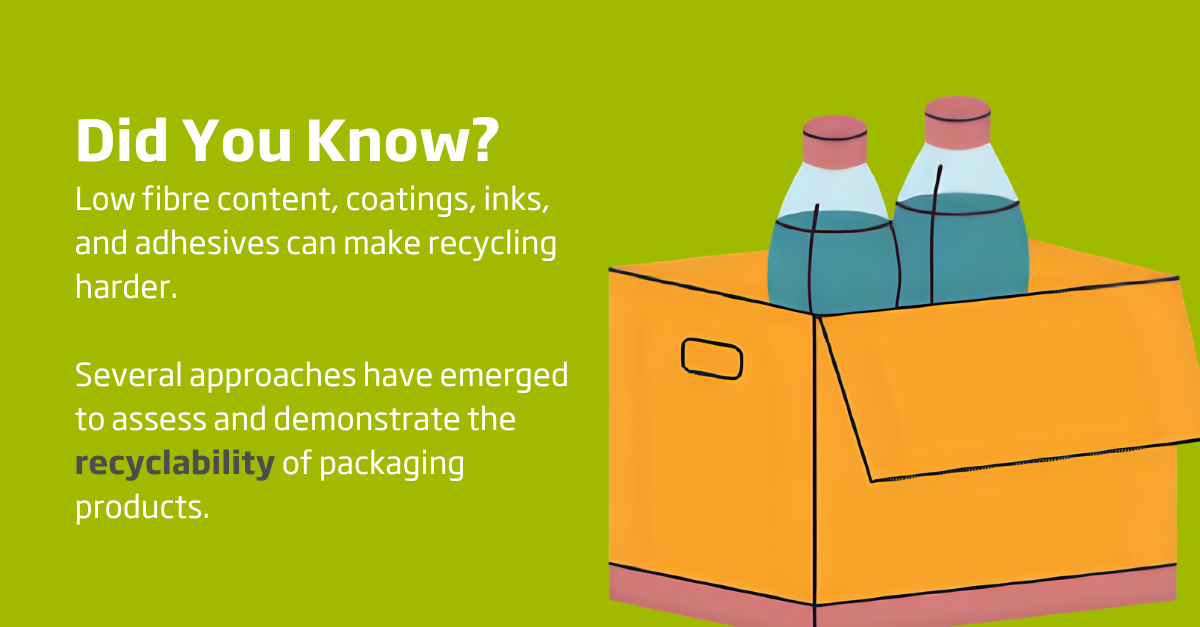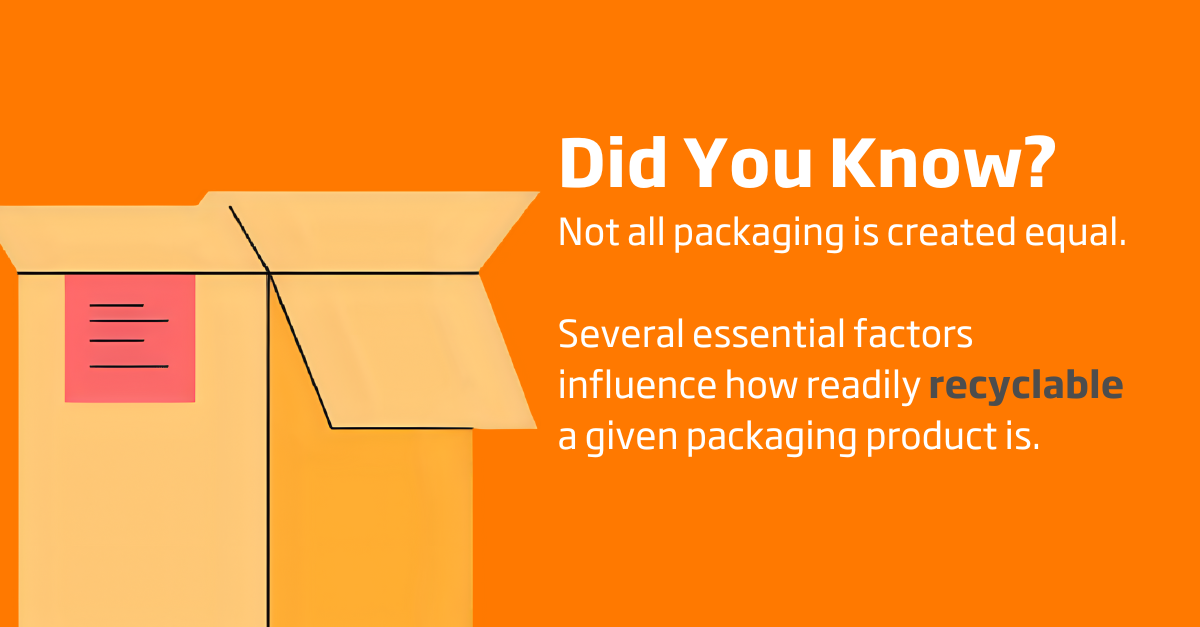Decoding Recyclability: A Guide to Recyclability Assessments
As we navigate the complexities of our modern world, recycling stands out as a vital component of a circular economy. It not only reduces waste but also conserves resources and encourages sustainable practices. However, the multitude of recyclability claims can be confusing. How can packaging engineers, product designers, and sustainability professionals determine whether a packaging product is truly recyclable?
5-minute read: DS Smith’s Customer Sustainability Manager, Amy Malone, is on hand to decode the various systems used to evaluate recyclability.

Understanding Recyclability
Recyclability refers to a product's ability to be collected, sorted and reprocessed to create new products.
This looks at the technical feasibility for a product to be recycled – will it break down in a recycling process and be used effectively as a secondary raw material for re-manufacturing? But also examines the ability of a product to be recycled in practice at scale – is there effective and widespread collection and sorting infrastructure that can deal with this packaging?
Recyclability’s importance lies in promoting resource conservation and reducing environmental impact. Given the increasing social and legislative emphasis on sustainability, understanding the standards and methodologies used to assess a packaging product’s recyclability claims is essential.

Commonly Used Standards
- On-Pack Recycling Label (OPRL):
This UK-based system provides clear guidance and recycling instructions to consumers on product packaging. It employs a labelling system based on specific criteria, allowing consumers to easily understand whether an item can be recycled, requires special disposal, or is not considered to be recyclable. - How2Recycle:
How2Recycle is a US-based labelling system that categorises recyclable items into different classes—recyclable, check local, not yet recyclable, and more. This approach educates consumers and helps them make better choices. - DS Smith's Recyclability Evaluation Service (RES):
DS Smith's RES uses the standardised methodology developed by CEPI and 4Evergreen to allow businesses internationally to assess the recyclability of their fibre-based packaging solutions and can then provide recommendations for design improvements. By utilising RES, companies can substantiate their green claims and ensure their fibre-based packaging meets regulatory standards. - ASTM Standards:
ASTM International provides several standards that define recyclability, in particular D6868, which pertains to the recyclability of plastic packaging. These standards facilitate consistency and ensure a uniform understanding of what qualifies as recyclable. - ISO Standards:
The International Organization for Standardization also offers a range of standards related to recyclability, notably ISO18604, which help to establish a comprehensive framework. These standards ensure that recyclability claims are credible and based on globally recognised criteria.

Factors Influencing Recyclability
Material composition is a primary determinant of recyclability. The fundamental type or combination of materials within a product heavily influences its recyclability. For instance, materials like aluminium and glass are highly recyclable and can be processed multiple times without degrading their quality. In contrast, certain plastics can present complexities; not all types (like PVC or polystyrene) are widely accepted in recycling programs. Understanding the material's properties helps engineers select the most suitable, recyclable options for their designs.
Product design can also significantly impact recyclability. Design choices, such as multi-material packaging, can complicate the recycling process, as many standard recycling facilities are not equipped to handle such combinations. Additionally, labels, ink, and adhesives can interfere with material purity, affecting the quality, yield, and visual impurities of recycled output. Designing for recyclability means considering how products can be easily disassembled and sorted, and reprocessed.
Legislation can also influence recyclable design. For instance, Extended Producer Responsibility (EPR) schemes hold producers financially accountable for paying the full cost of managing and recycling the packaging waste from their products. In the UK, large producers are required to evaluate all household packaging they supply using the Recyclability Assessment Methodology (RAM) framework to assess the recyclability of their packaging. Less recyclable packaging often results in higher fees under EPR schemes, incentivising companies to use more recyclable materials and design for recyclability.
The geographical availability of the necessary infrastructure for collection, sorting, and reprocessing also plays a critical role in recyclability. In urban areas, recycling facilities may be more developed, while rural regions may have limited resources. This disparity can lead to situations where a material is technically recyclable, but local capabilities render it impractical for recycling, skewing perceptions of overall recyclability.
Finally, the viability of recycling is contingent upon the demand for recycled materials. If manufacturers don’t have a market for recycled inputs, the recycling system becomes unsustainable. Encouraging the development of markets for recycled materials is crucial for creating a circular economy. Increased consumer awareness and demand for products made from recycled materials can drive this change.
Challenges and Limitations
The methodologies for assessing recyclability encounter several challenges that can hinder their effectiveness. Variability in regional standards, new technologies, consumer confusion, and contamination of recyclable materials can all pose significant challenges.
While assessing recyclability involves understanding various complex factors, addressing the inherent challenges requires collaboration among industries, governments, and consumers. By fostering awareness, we can help businesses make informed decisions about their packaging.